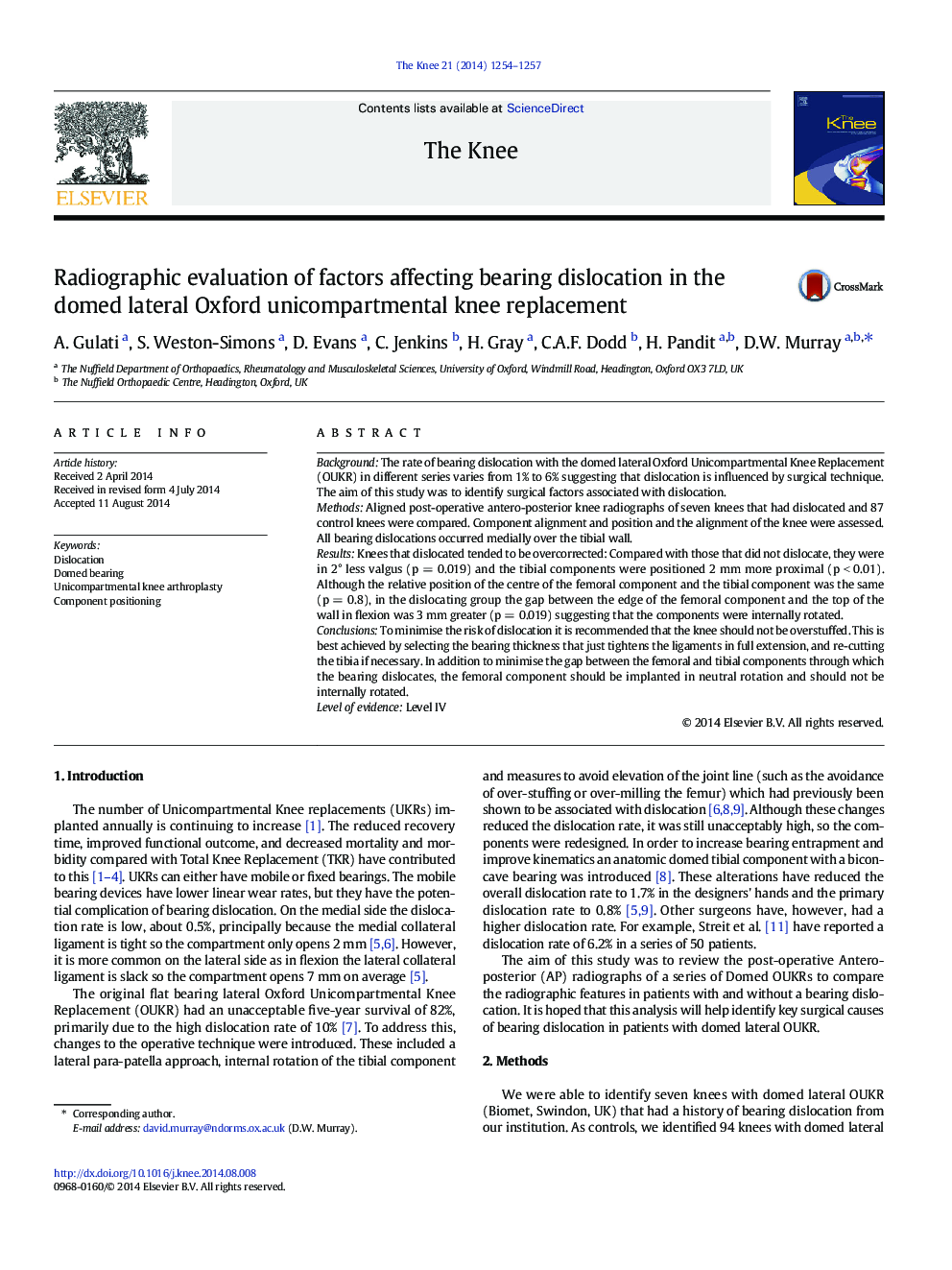| کد مقاله | کد نشریه | سال انتشار | مقاله انگلیسی | نسخه تمام متن |
|---|---|---|---|---|
| 6211377 | 1267213 | 2014 | 4 صفحه PDF | دانلود رایگان |
- All bearing dislocations occurred medially over the tibial wall.
- Knees that dislocated were in 2° less valgus and the tibial components were positioned 2 mm more proximal.
- In the dislocating group, the femoral components were found to be internally rotated.
- To minimise the risk of dislocation, it is recommended that the knee should not be overstuffed.
- The femoral component should be implanted in neutral rotation.
BackgroundThe rate of bearing dislocation with the domed lateral Oxford Unicompartmental Knee Replacement (OUKR) in different series varies from 1% to 6% suggesting that dislocation is influenced by surgical technique. The aim of this study was to identify surgical factors associated with dislocation.MethodsAligned post-operative antero-posterior knee radiographs of seven knees that had dislocated and 87 control knees were compared. Component alignment and position and the alignment of the knee were assessed. All bearing dislocations occurred medially over the tibial wall.ResultsKnees that dislocated tended to be overcorrected: Compared with those that did not dislocate, they were in 2° less valgus (p = 0.019) and the tibial components were positioned 2 mm more proximal (p < 0.01). Although the relative position of the centre of the femoral component and the tibial component was the same (p = 0.8), in the dislocating group the gap between the edge of the femoral component and the top of the wall in flexion was 3 mm greater (p = 0.019) suggesting that the components were internally rotated.ConclusionsTo minimise the risk of dislocation it is recommended that the knee should not be overstuffed. This is best achieved by selecting the bearing thickness that just tightens the ligaments in full extension, and re-cutting the tibia if necessary. In addition to minimise the gap between the femoral and tibial components through which the bearing dislocates, the femoral component should be implanted in neutral rotation and should not be internally rotated.Level of evidenceLevel IV
Journal: The Knee - Volume 21, Issue 6, December 2014, Pages 1254-1257
